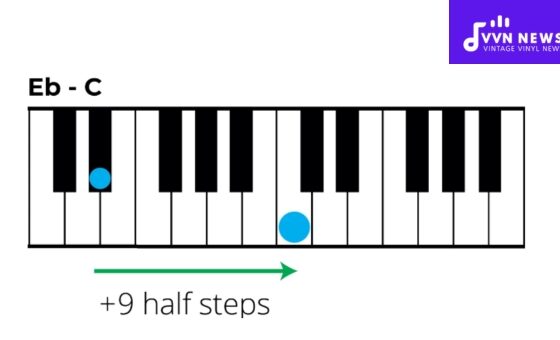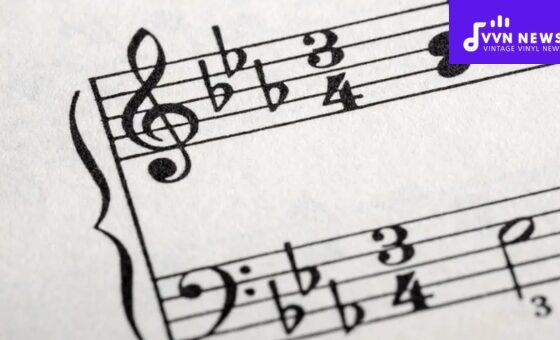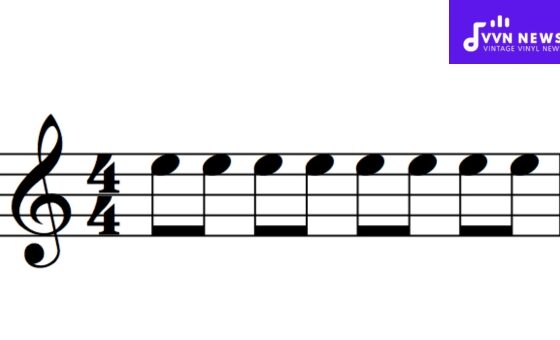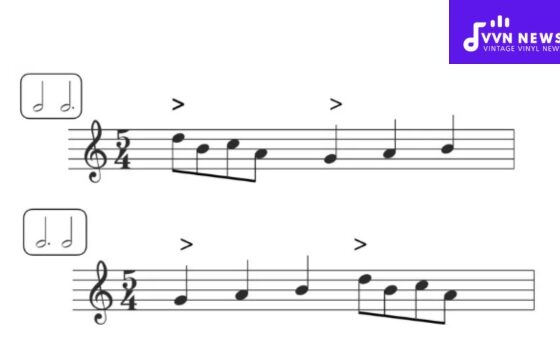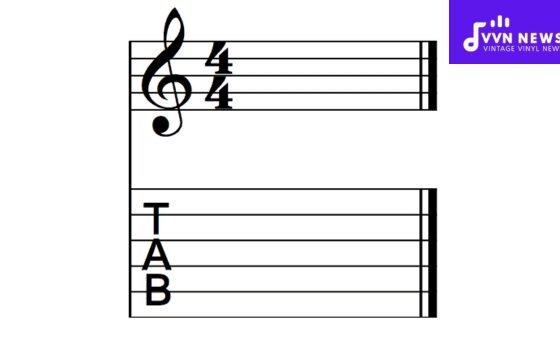I have always been captivated by the melodious and enchanting sounds of the flute, an instrument that has an incredible ability to evoke a wide range of emotions.
As a passionate flute enthusiast, I’m constantly on the lookout for iconic and renowned flute pieces that showcase the versatility and beauty of this instrument.
In this blog post, I am thrilled to share with you a curated list of 20 famous flute pieces that every flute lover should experience.
Whether you’re a seasoned flutist or simply appreciate the sweet sounds of this instrument, these iconic works are sure to captivate your senses and leave you in awe.
Within the realm of classical music, the flute has been featured in numerous compositions that have stood the test of time.
From soul-stirring melodies to vibrant and lively compositions, there is something for everyone in this collection.
Throughout history, composers have harnessed the expressive qualities of the flute to create pieces that are both technically challenging and emotionally evocative.
So without further ado, let’s embark on a musical journey and discover some truly mesmerizing works for our beloved instrument.
20 Famous Flute Pieces
As a passionate flute enthusiast, I have compiled a list of 20 famous flute pieces that will surely delight and captivate any music lover.
From classic to contemporary, these iconic works for the flute showcase the instrument’s incredible range and emotive qualities.
Whether you are an experienced flutist or simply appreciate beautiful melodies, this curated collection has something for everyone.
Debussy: Syrinx
One of the most iconic flute pieces in the repertoire, Claude Debussy’s “Syrinx” is a solo flute composition that showcases the instrument’s expressive capabilities.
Composed in 1913, this hauntingly beautiful piece draws inspiration from Greek mythology. It takes its name from the nymph Syrinx, who was transformed into a reed by Pan, the god of nature.
In “Syrinx,” Debussy masterfully explores the various tonal colors and techniques of the flute. The piece is marked by its lyrical melodies and evocative harmonies, flowing seamlessly from one phrase to another.
Its ethereal and improvisatory nature allows flutists to display their interpretation skills.
The composition is written in a single movement and starts with contemplative and mournful phrases that gradually build up tension.
As the music progresses, it becomes more virtuosic, demanding technical prowess from the flutist. The final section brings back echoes of earlier themes, leading to a delicate and reflective ending.
Jolivet: Chant de Linos
Written by André Jolivet in 1944, “Chant de Linos” is a dramatic flute solo piece that showcases avant-garde elements blended with traditional musical structures.
Inspired by Greek mythology once again, this composition tells the story of Linus, a musician slain by Hercules.
Jolivet’s work demands both technical agility and expressive interpretation from the flutist. It explores extended techniques such as multiphonics (producing multiple sounds simultaneously), flutter-tonguing (rapidly rolling tongue on flute embouchure), and glissandi (sliding between notes). These techniques contribute to the piece’s emotional intensity.
“Chant de Linos” consists of several sections that progress through contrasting moods. It begins with an intense and rhythmic motif representing Linos’ lamentation before shifting into a more contemplative and melodic theme.
The composition reaches its climax with a highly virtuosic and energetic section before returning to a mournful ending reminiscent of the opening.
Messiaen: Le Merle Noir
Olivier Messiaen’s “Le Merle Noir” (The Blackbird) is a delightful duet for flute and piano composed in 1952. As an ornithologist, Messiaen’s fascination with birdsong is evident in this work.
The piece reflects the joyful and unpredictable melodies of the blackbird, capturing its essence through various techniques.
The composition begins with an improvisatory introduction by the piano, imitating birdcalls. The flute enters with a lively and spirited melody, mimicking the blackbird’s song.
Throughout the piece, Messiaen incorporates rapid trills and fluttering passages to represent bird flutters.
“Le Merle Noir” exudes a joyful energy as it weaves intricate interplay between the flute and piano. The dynamic contrasts between playful motifs and reflective moments create a sense of exploration and delight.
Also Read: 10 Famous Satanic Songs To Listen In 2025 [Notorious Songs]
Mozart: Flute Concerto No. 2 in D major
Wolfgang Amadeus Mozart’s Flute Concerto No. 2 in D major is one of the most famous works for flute soloists accompanied by orchestra.
Composed in 1778, this concerto showcases Mozart’s compositional genius combined with his understanding of the flute as an instrument.
The concerto consists of three movements: Allegro aperto, Adagio ma nontroppo, and Rondo: Tempo di Menuetto. Each movement presents different challenges and opportunities for the soloist to shine.
In the Allegro aperto, Mozart treats the flute as equal to the other orchestral instruments, allowing it to frequently exchange virtuosic passages with them.
The Adagio ma nontroppo showcases lyrical melodies that highlight the flute’s expressive capabilities. The concerto concludes with the joyful and spirited Rondo, where the flute engages in a playful dialogue with the orchestra.
Poulenc: Sonata for Flute and Piano
Francis Poulenc’s Sonata for Flute and Piano is a prominent work in the flute repertoire composed in 1957.
Reflecting Poulenc’s signature blend of lyricism and wit, this sonata offers a compelling musical journey for flute enthusiasts.
The piece is divided into three movements: Allegro malinconico, Cantilena: Assez lent, and Presto giocoso.
The opening movement is marked by contrasting sections of melancholy and exuberance, showcasing the flute’s ability to convey a wide emotional range.
The second movement, Cantilena: Assez lent, captures a serene atmosphere through its melodic lines that soar above the gentle piano accompaniment.
It creates an introspective mood that allows both instruments to meld together in a beautiful dialogue.
The final movement, Presto giocoso, bursts with energy and playfulness. It demonstrates Poulenc’s keen sense of rhythm and humorous musical gestures that engage both the flute and piano in an exciting interplay.
Bach: Partita in A minor for Solo flute
The Bach: Partita in A minor for Solo flute is a masterpiece that showcases the technical and expressive capabilities of the flute.
Composed by Johann Sebastian Bach, this solo flute work consists of four distinctive movements – Allemande, Corrente, Sarabande, and Bourrée angloise.
Each movement within the partita highlights different qualities of the flute and poses a unique challenge for flutists.
The Allemande features graceful melodic lines and intricate ornamentation, while its fast-paced rhythms and lively energy characterizes the Corrente.
The Sarabande is a slow, introspective movement that explores the mellower side of the instrument’s tonal palette. Lastly, the Bourrée angloise adds a touch of playfulness with its quick tempo and spirited melodies.
This composition demands technical precision from flutists as they navigate through challenging passages, intricate ornamentation, and delicate phrasing.
The Partita in A minor is a staple in classical flute repertoire and continues to captivate audiences with its timeless beauty.
Telemann: 12 Fantasias
The Telemann: 12 Fantasias is renowned as one of the most significant contributions to solo flute literature. Composed by Georg Philipp Telemann, these fantasies showcase his innovative approach to composition.
Each fantasia in this collection provides a wealth of musical possibilities for flutists to explore. From dazzling virtuosic passages to expressive melodies, these works display Telemann’s mastery in capturing various moods and emotions within each piece.
The 12 Fantasias are written in contrasting styles such as slow lyrical movements alongside lively dance-like sections.
This diversity allows flutists to showcase their interpretive skills while pushing their technical abilities to new heights.
With their rich harmonies, intricate counterpoint sections, and breathtaking virtuosity, the Telemann: 12 Fantasias is a treasure trove of musical exploration for flutists of all levels.
Also Read: The Most Dangerously Relaxing Song Ever [Dare To Listen?]
C.P.E. Bach: Sonata in A Minor
The C.P.E. Bach: Sonata in A Minor is a remarkable composition that combines expressiveness and innovation. Carl Philipp Emanuel Bach, son of Johann Sebastian Bach, composed this sonata for solo flute.
The sonata features three movements – Poco adagio, Allegro, and Allegro assai – each contributing to the unique character of the piece.
The Poco adagio opens with a lyrical and expressive melody that allows flutists to showcase their ability to shape lines.
The Allegro section presents a lively and energetic theme, filled with brilliant runs and technical challenges. The final movement, Allegro assai, is characterized by its virtuosic passages and rhythmic intricacies.
C.P.E. Bach’s Sonata in A Minor pushes the boundaries of traditional flute music with its use of contrasting dynamics, unexpected harmonies, and unconventional melodic lines.
This composition requires flutists to channel their inner expressiveness while navigating through technical challenges.
Karg-Elert: Sonata Appassionata op.140
The Karg-Elert: Sonata Appassionata op.140 is a magnificent example of late Romantic flute literature composed by Sigfrid Karg-Elert.
This three-movement sonata takes listeners on an emotional journey through its passionate melodies and rich harmonic progressions.
The first movement begins with an intense declaration full of fiery energy and virtuosic flourishes. The second movement offers a contrasting atmosphere with its lyrical lines that evoke a sense of nostalgia and longing.
The final movement brings the piece to an exhilarating conclusion with its relentless energy and exciting rhythmic patterns.
Karg-Elert’s Sonata Appassionata op.140 showcases the versatility of the flute, requiring flutists to exhibit not only technical prowess but also the ability to convey a wide range of emotions. With its powerful and expressive nature, this sonata remains a favorite among flutists and audiences alike.
Honneger: Danse de la Chevre
Danse de la Chevre (Dance of the Goat) is a captivating solo flute piece composed by Arthur Honegger. This work is known for its unique and evocative musical language.
The piece consists of three distinct sections that explore different musical moods. The opening section presents a hauntingly beautiful melody that gradually builds in intensity.
The middle section features lively, rhythmic passages that imitate the playful movements of a goat. The final section returns to the lyrical theme from the beginning, creating a sense of closure and serenity.
Honegger’s Danse de la Chevre demands both technical precision and expressive playing from flutists. This composition showcases the flute’s ability to create a wide range of sounds, from ethereal and delicate to bold and dynamic.
Mozart: Flute Concerto No. 1 in G Major
Mozart’s Flute Concerto No. 1 in G Major is an absolute masterpiece that exemplifies his ability to create unforgettable melodies.
Written in 1778, it is one of the earliest and most beloved concertos for flute. The concerto consists of three movements: Allegro aperto, Adagio nontroppo, and Rondo – Tempo di Menuetto.
The first movement opens with vibrant orchestral accompaniment before the flute takes center stage with its lyrical and agile passages.
The second movement introduces a serene atmosphere with its graceful melody, allowing the soloist to display their expressive interpretation. The final movement is a delightful dance-like rondo that exhibits Mozart’s signature playfulness.
Reinecke: Concerto in D Major Op.283
Carl Reinecke’s Concerto in D Major Op.283 is a cornerstone of the flute repertoire known for its technical demands and lyrical charm. Composed in 1908, this concerto showcases both virtuosic passages and tender moments.
The first movement unfolds with sweeping orchestral phrases, creating a rich tapestry upon which the solo flute weaves its dynamic melodies.
The slow second movement captivates listeners with its poignant expressions, while the third movement dazzles with its energetic rhythms and intricate cadenzas.
Ibert: Flute Concerto
Jacques Ibert’s Flute Concerto is an enchanting and colorful work that highlights the flute’s expressive capabilities. Composed in 1932, it is a delightful blend of neoclassical and impressionistic styles.
The concerto opens with a lively and playful Allegro, where the flute engages in a delightful dialogue with the orchestra.
The slow second movement, Andante, offers a moment of introspection and exquisite lyricism. The final movement, Allegro Scherzando, is a brilliant display of technical agility and rhythmic vitality.
Martinu: Sonata
Bohuslav Martinu’s Sonata for Flute and Piano is a compelling blend of modernism and lyricism. Composed in 1945, it explores various moods and textures through its three distinct movements.
The first movement presents an assertive and rhythmically intricate dialogue between the flute and piano.
The slow second movement offers a melodic respite with its lyrical lines that soar over rich harmonic progressions. The final movement is characterized by its lively tempo marking Presto, showcasing Martinu’s penchant for rhythmic vitality.
Reinecke: Undine Sonata
Reinecke’s Undine Sonata is inspired by Friedrich de la Motte Fouqué’s novella “Undine,” which tells the story of a water nymph.
This four-movement sonata captures the fantastical essence of the tale while highlighting the flute’s expressive range.
The first movement paints an enchanting picture as delicate flute melodies intertwine with sparkling piano accompaniments.
In the second movement, listeners are transported to deeper emotional realms through introspective melodies. The third movement features spirited exchanges between the flute and piano before leading into a virtuosic finale filled with excitement.
Copland: Duo for Flute and Piano
Aaron Copland’s Duo for Flute and Piano is a remarkable composition that showcases the unique qualities of both instruments.
Written in 1971, this piece seamlessly blends Copland’s signature American folk-inspired style with elements of contemporary classical music.
The flute takes center stage, displaying its agility and lyrical capabilities, while the piano provides a rich harmonic backdrop.
The piece is divided into three movements, each highlighting different aspects of the flute’s expressive range.
The opening movement, entitled “Flowing,” features flowing melodic lines that intertwine between the flute and piano.
The second movement, “Poetic, somewhat mournful,” contrasts with the first by incorporating introspective and melancholic melodies that tug at the heartstrings.
The final movement, “Lively, rhythmic,” is a whirlwind of syncopated rhythms and energetic motifs that showcase both technical prowess and musicality.
Telemann: Suite in A minor
Georg Philipp Telemann was a master of Baroque music, known for his extensive body of works showcasing various instruments.
His Suite in A minor for flute solo is one such masterpiece that allows the flute to take center stage. Composed in the early 18th century, this suite consists of several dance movements arranged in a traditional Baroque suite format.
The suite opens with a stately Allemande, followed by a lively Courante that demands dexterity and agility from the flutist.
A gracefully flowing Sarabande follows, inviting the performer to explore nuanced phrasing and expression. The suite continues with vibrant Bourrées and an energetic Gigue, showcasing Telemann’s mastery of rhythmic intricacy.
Hindemith: Sonata for Flute and Piano
Paul Hindemith’s Sonata for Flute and Piano is an exemplary representation of 20th-century neoclassical music.
Composed in 1936, this four-movement sonata challenges the flutist with its technical demands and explores a wide dynamic range within a modern harmonic language.
The first movement, marked “Heiter bewegt” (Cheerfully moving), engages both instruments in a playful dialogue, featuring sharp rhythmic accents and intricate harmonic progressions.
The second movement, “Sehr Langsam” (Very slow), offers moments of introspection and expressive lyricism. The lively third movement, “Sehr lebhaft” (Very lively), captivates listeners with its spirited melodies and animated interplay between flute and piano.
The sonata concludes with a brisk and energetic fourth movement, “Sehr langsame Viertel” (Very slow quarter notes).
Also Read: Top 12 Most Viewed Music Videos [Blockbuster Hits From The Globe]
Boehm: Grand Polonaise
The Grand Polonaise by Theobald Boehm is a dazzling showpiece for the flute that demonstrates the instrument’s technical capabilities while bathed in the splendor of the Polish dance form.
This virtuosic work highlights Boehm’s innovations in the flute mechanism, allowing for the effortless execution of rapid passages.
This exciting composition begins with an enchanting introduction before launching into vivacious polonaise rhythms.
The piece weaves through various sections that explore different moods and tempos, showcasing the flutist’s ability to transition seamlessly between lyrical melodies and virtuosic runs. A triumphant coda brings this majestic polonaise to a resounding close.
Gaubert: Three Watercolors
Three Watercolors by Philippe Gaubert is a delightful trio of flute pieces inspired by different aspects of water.
Composed in 1906-1908, these miniatures each capture a specific atmosphere related to water – from serene ponds to sparkling streams.
The first piece, “Jour d’été à la montagne” (Summer Day in the Mountains), evokes images of rippling brooks and peaceful landscapes.
The second, “Soir sur la Plaine” (Evening on the Plain), transports listeners to a tranquil pastoral scene, with gentle melodies reminiscent of a meandering river.
The final piece, “Les courants de l’Océan” (Currents of the Ocean), portrays the powerful and ever-changing nature of ocean waves through intricate rhythms and dynamic contrasts.
These Three Watercolors beautifully display Gaubert’s melodic sensibility and masterful use of color, making them a must-have in the repertoire of any flute enthusiast.
Each piece offers its own unique musical experience that captivates flutists and listeners alike. Whether you’re drawn to the expressive qualities of Debussy or the technical brilliance of Boehm, exploring these works will undoubtedly deepen your appreciation for the beauty and versatility of the flute.
FAQs about Famous Flute Pieces
Can you tell me more about Debussy’s Syrinx?
Debussy’s Syrinx is a captivating solo flute piece often considered one of the most important works for the instrument. It showcases the flute’s ability to convey emotion and storytelling through its lyrical melodies.
What makes Poulenc’s Sonata for Flute and Piano stand out?
Poulenc’s Sonata for Flute and Piano is a delightful and dynamic composition that combines playful motifs with moments of deep introspection, highlighting the flute’s expressive range and agility.
Is Bach’s Partita in A minor technically challenging for flutists?
Yes, Bach’s Partita in A minor presents significant technical challenges for flutists, requiring precision and control. This piece offers a wonderful opportunity for musicians to showcase their mastery of the instrument.
Which famous composer wrote the iconic Suite in A minor?
Telemann composed a remarkable Suite in A minor specifically for the flute, creating a delightful blend of virtuosity, elegance, and charm that has made it a favorite among flutists.
How does Hindemith’s Sonata for Flute and Piano push musical boundaries?
Hindemith’s Sonata for Flute and Piano pushes musical boundaries by exploring complex harmonies and unconventional techniques while maintaining a sense of heartfelt expression throughout.
Conclusion
The flute has a rich and diverse repertoire of famous pieces that have captured the hearts of flute enthusiasts worldwide.
From the hauntingly beautiful melodies of Debussy’s “Syrinx” to the virtuosic brilliance of Mozart’s flute concertos, these iconic works showcase the versatility and beauty of this instrument.
Whether you prefer classical compositions or more contemporary pieces, there is something for everyone in this collection.
o grab your flute, immerse yourself in these enchanting melodies, and experience the magic that the flute has to offer.




